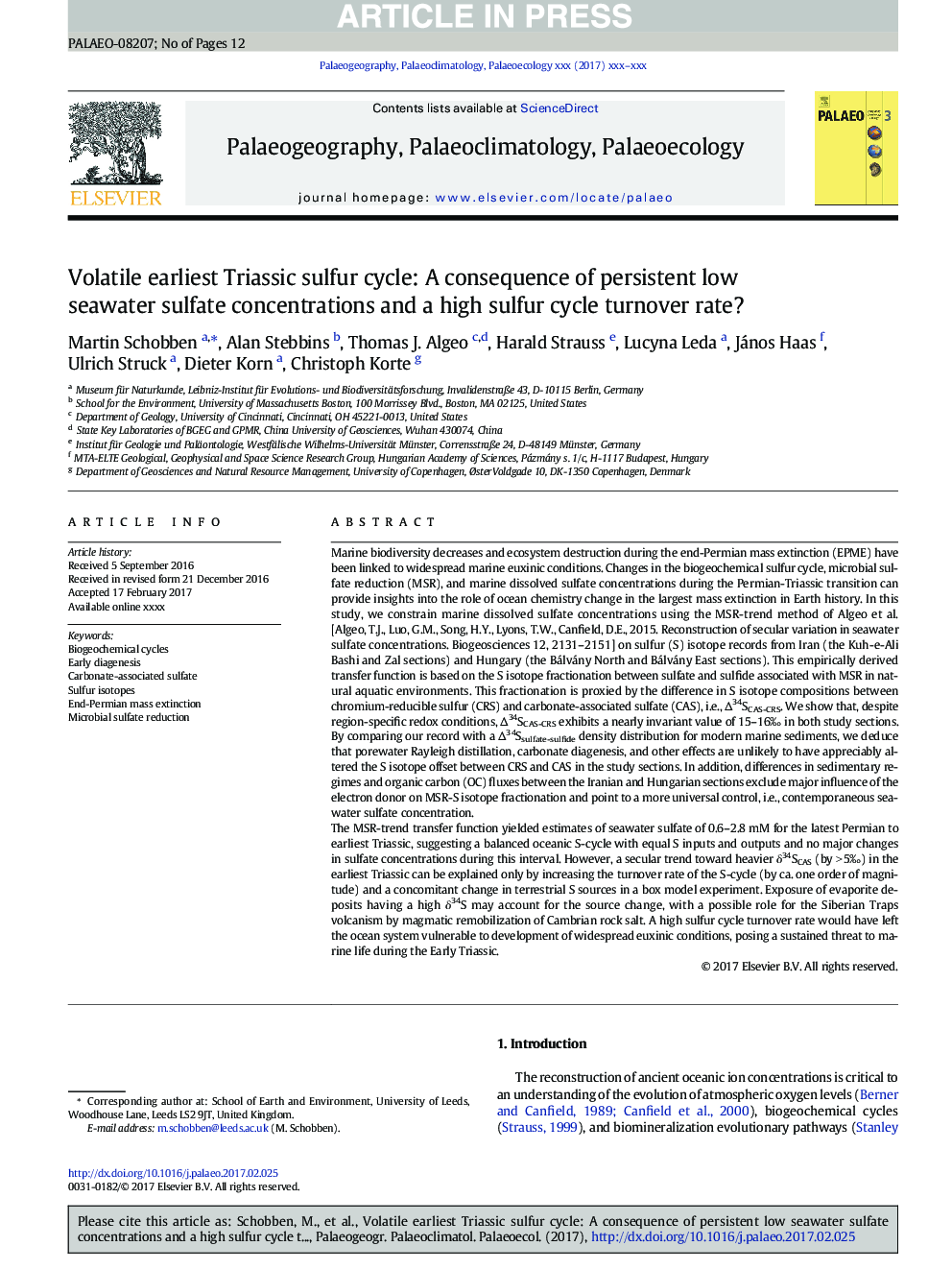| کد مقاله | کد نشریه | سال انتشار | مقاله انگلیسی | نسخه تمام متن |
|---|---|---|---|---|
| 8868615 | 1622106 | 2017 | 12 صفحه PDF | دانلود رایگان |
عنوان انگلیسی مقاله ISI
Volatile earliest Triassic sulfur cycle: A consequence of persistent low seawater sulfate concentrations and a high sulfur cycle turnover rate?
ترجمه فارسی عنوان
اولین سیکل سولفید تریاس نوین ناشی از کاهش غلظت پایدار سولفات روی آب و یک نرخ چرخه سولفور بالا چیست؟
دانلود مقاله + سفارش ترجمه
دانلود مقاله ISI انگلیسی
رایگان برای ایرانیان
کلمات کلیدی
چرخه بیوگرافی شیمیایی، دیانژن اولیه، سولفات وابسته به کربنات، ایزوتوپهای گوگرد، انقراض جمعی انتهای پرمین، کاهش سولفات میکروبی،
موضوعات مرتبط
مهندسی و علوم پایه
علوم زمین و سیارات
فرآیندهای سطح زمین
چکیده انگلیسی
The MSR-trend transfer function yielded estimates of seawater sulfate of 0.6-2.8 mM for the latest Permian to earliest Triassic, suggesting a balanced oceanic S-cycle with equal S inputs and outputs and no major changes in sulfate concentrations during this interval. However, a secular trend toward heavier δ34SCAS (by > 5â°) in the earliest Triassic can be explained only by increasing the turnover rate of the S-cycle (by ca. one order of magnitude) and a concomitant change in terrestrial S sources in a box model experiment. Exposure of evaporite deposits having a high δ34S may account for the source change, with a possible role for the Siberian Traps volcanism by magmatic remobilization of Cambrian rock salt. A high sulfur cycle turnover rate would have left the ocean system vulnerable to development of widespread euxinic conditions, posing a sustained threat to marine life during the Early Triassic.
ناشر
Database: Elsevier - ScienceDirect (ساینس دایرکت)
Journal: Palaeogeography, Palaeoclimatology, Palaeoecology - Volume 486, 15 November 2017, Pages 74-85
Journal: Palaeogeography, Palaeoclimatology, Palaeoecology - Volume 486, 15 November 2017, Pages 74-85
نویسندگان
Martin Schobben, Alan Stebbins, Thomas J. Algeo, Harald Strauss, Lucyna Leda, János Haas, Ulrich Struck, Dieter Korn, Christoph Korte,
